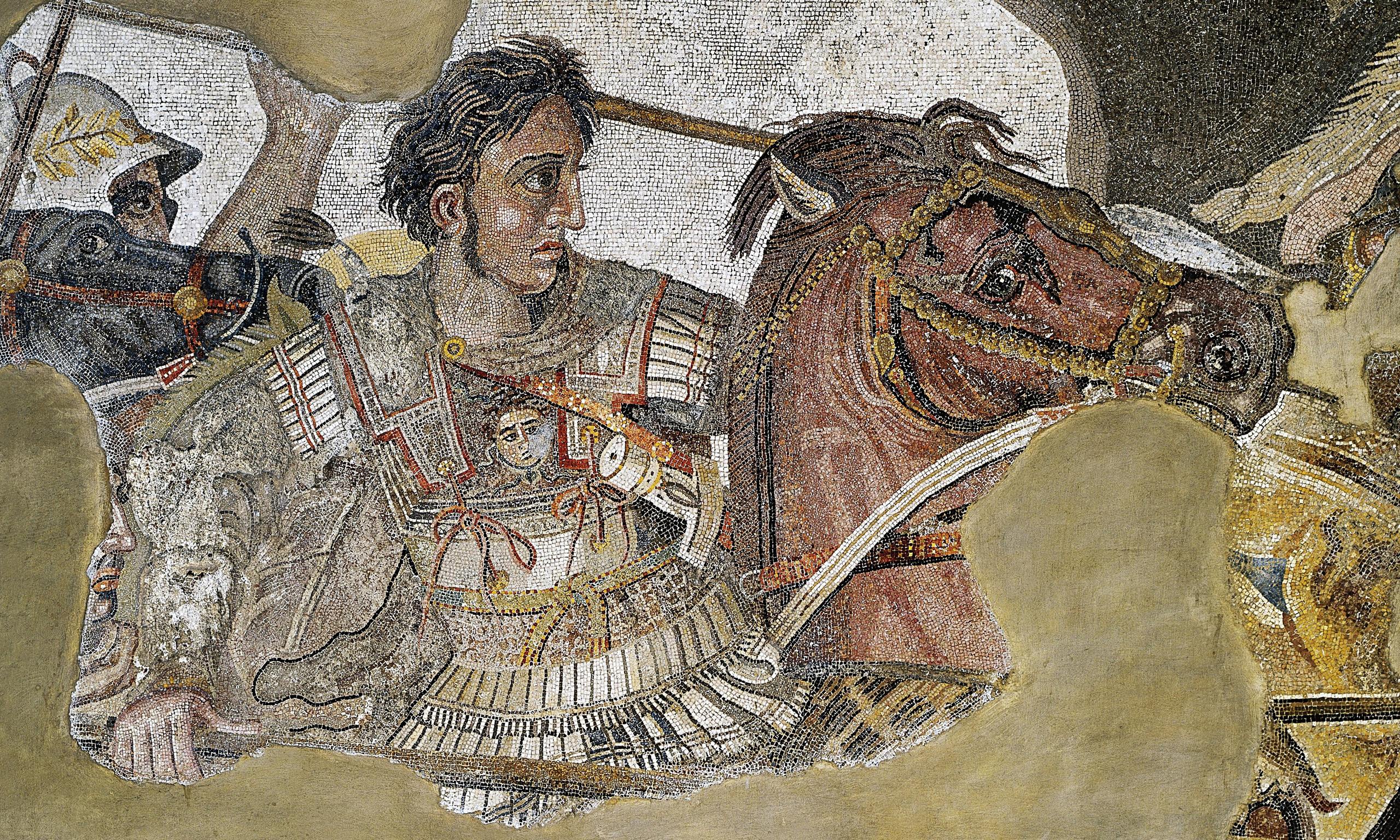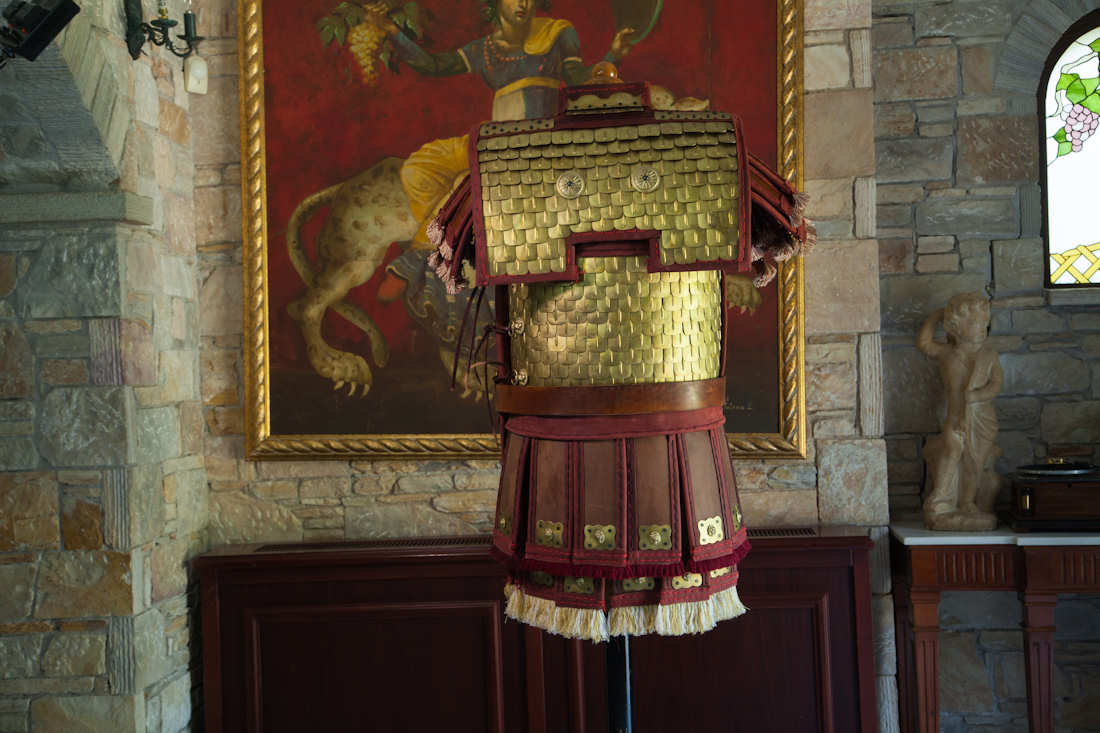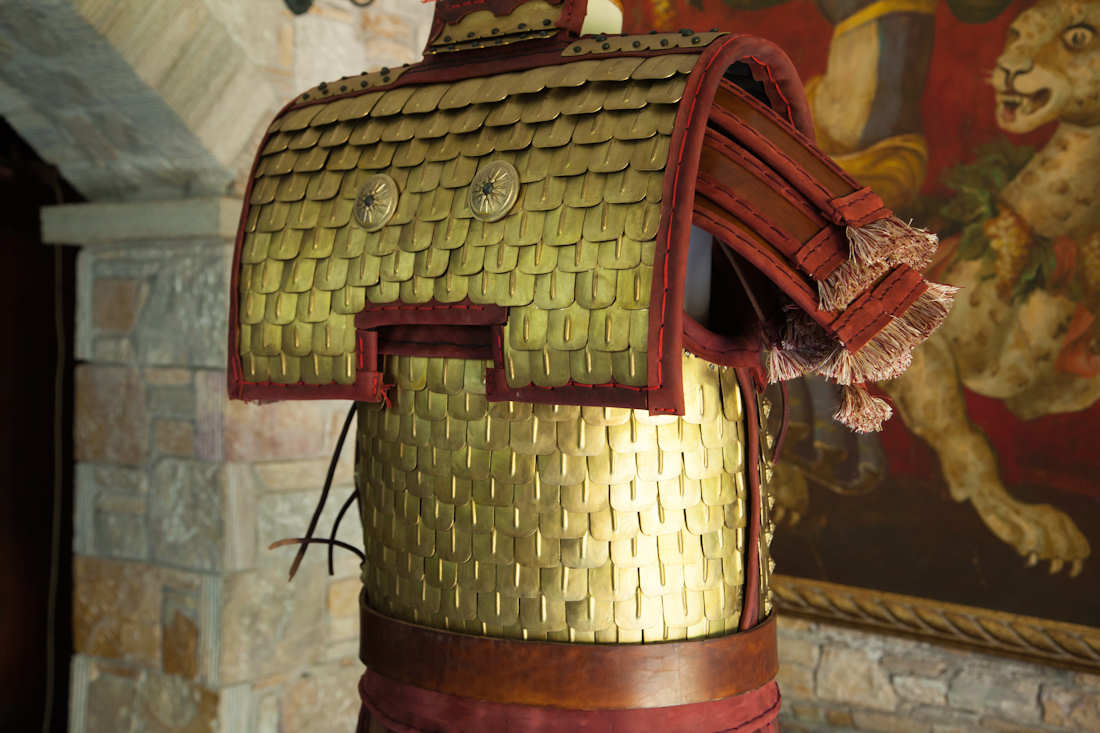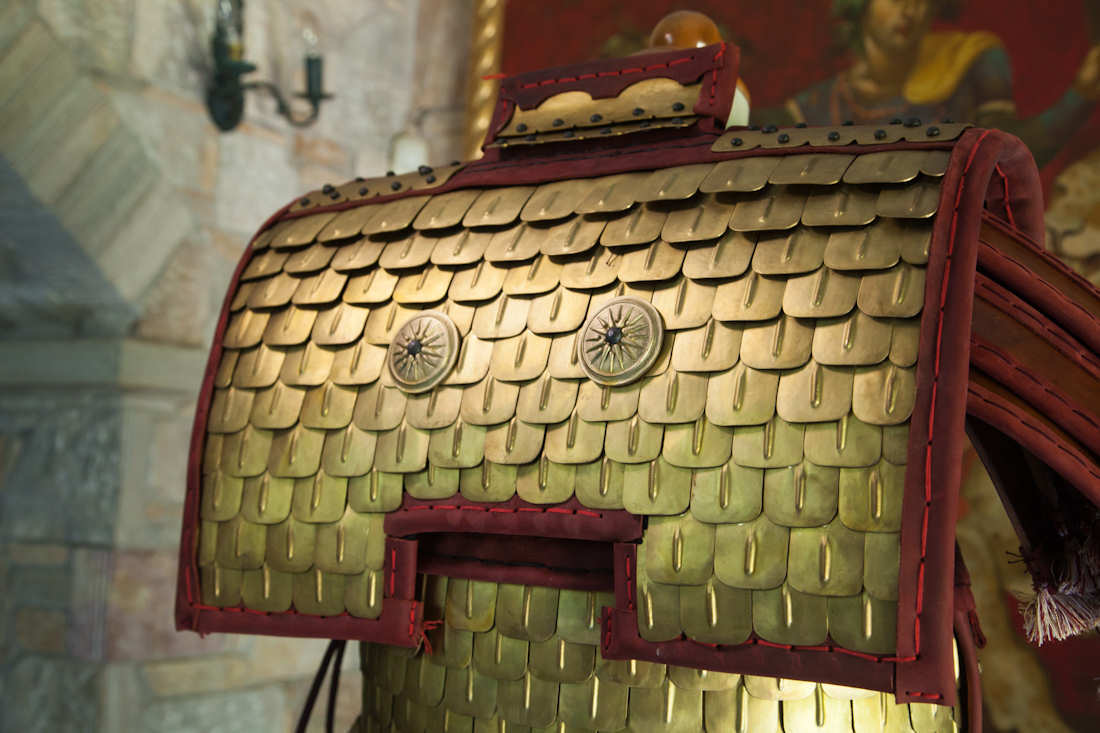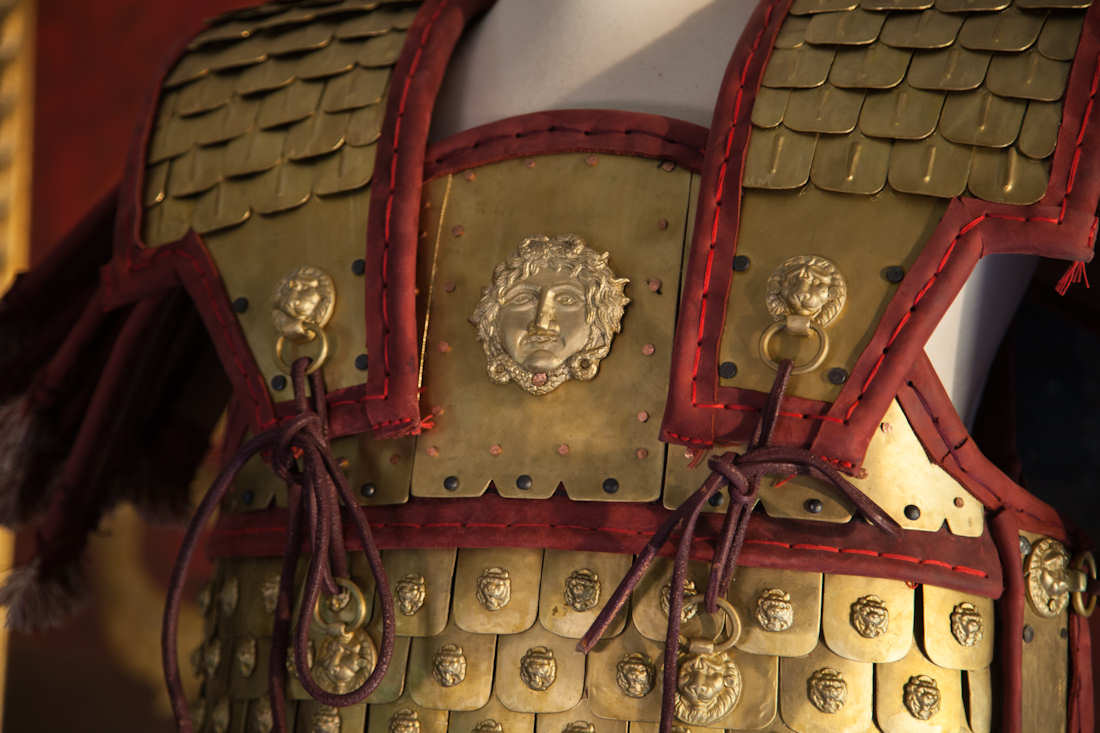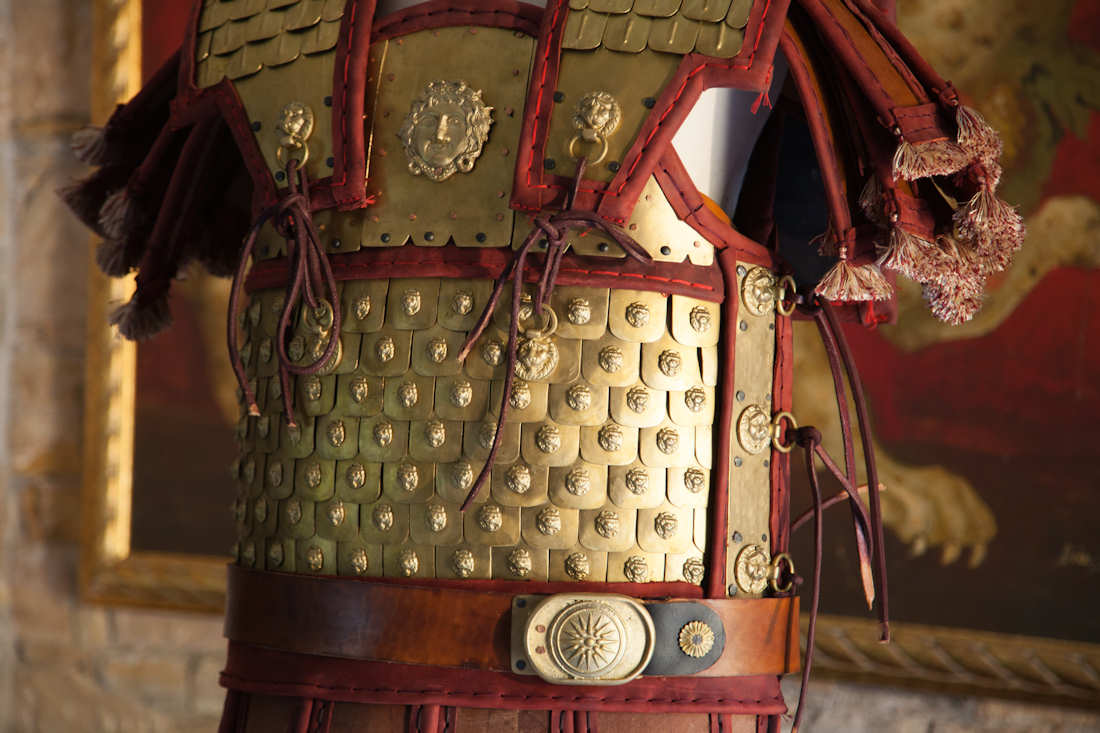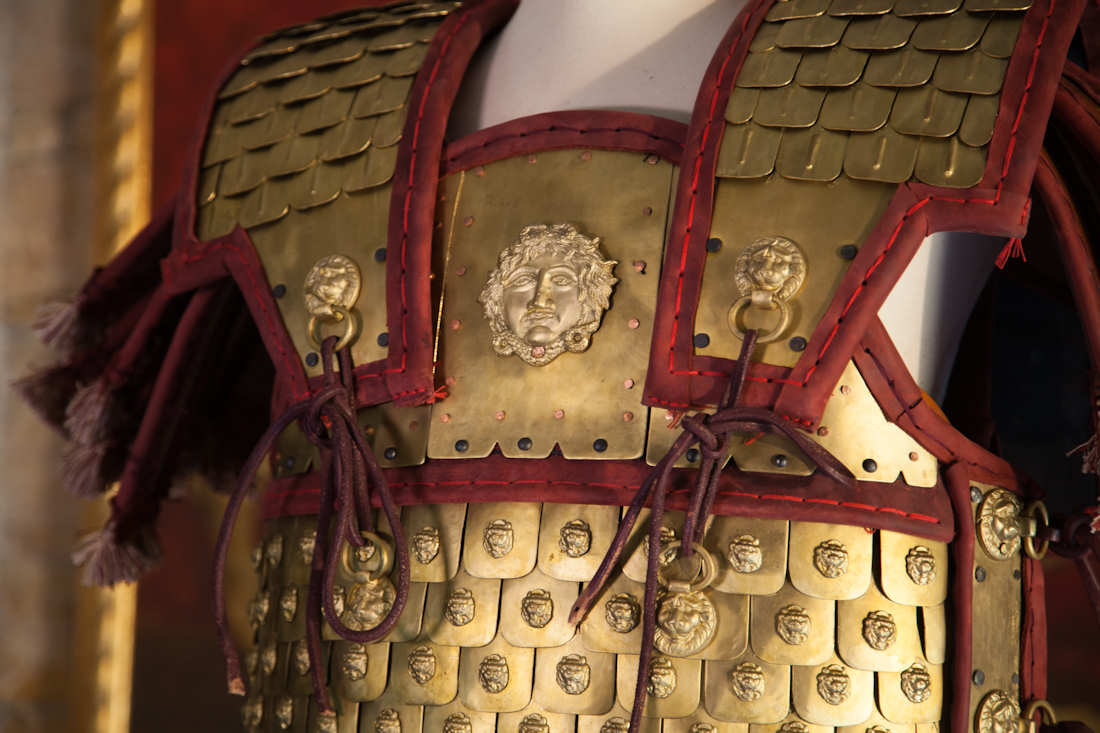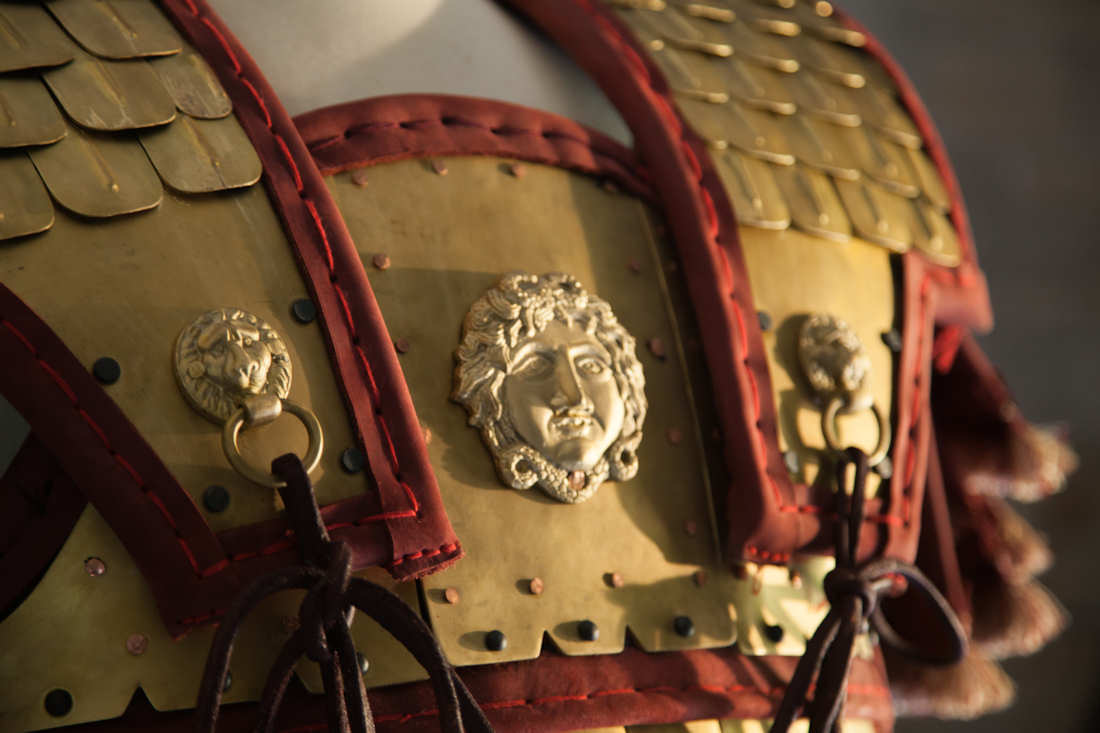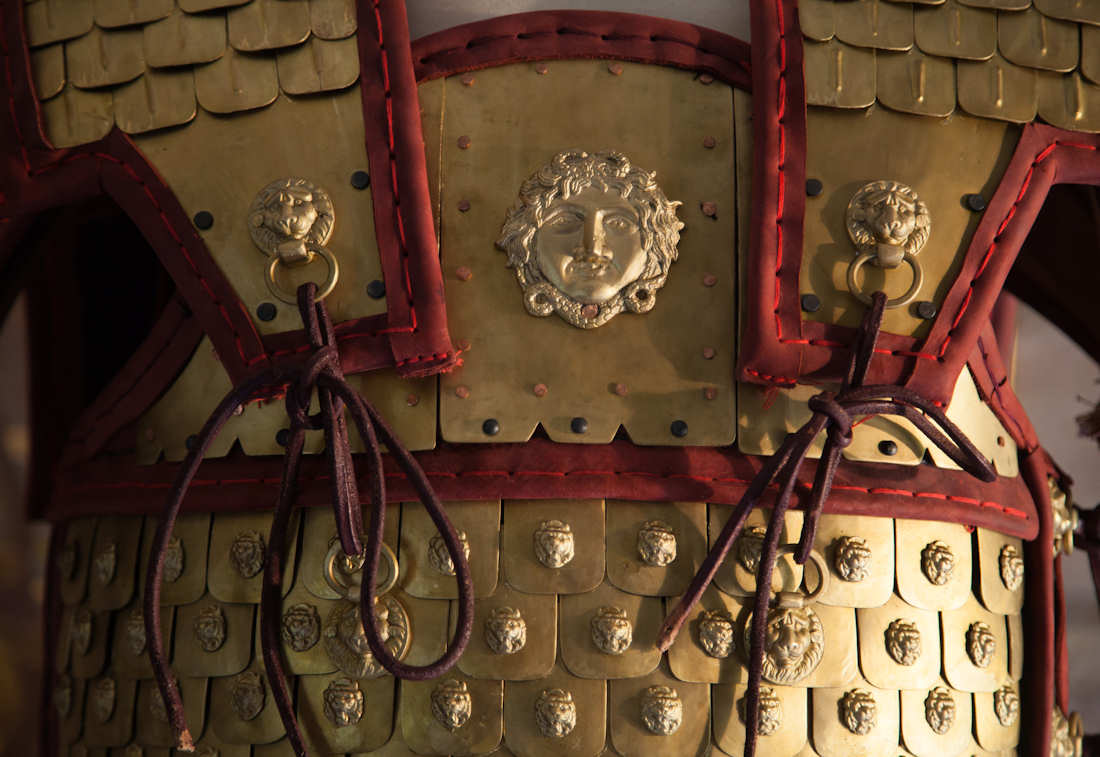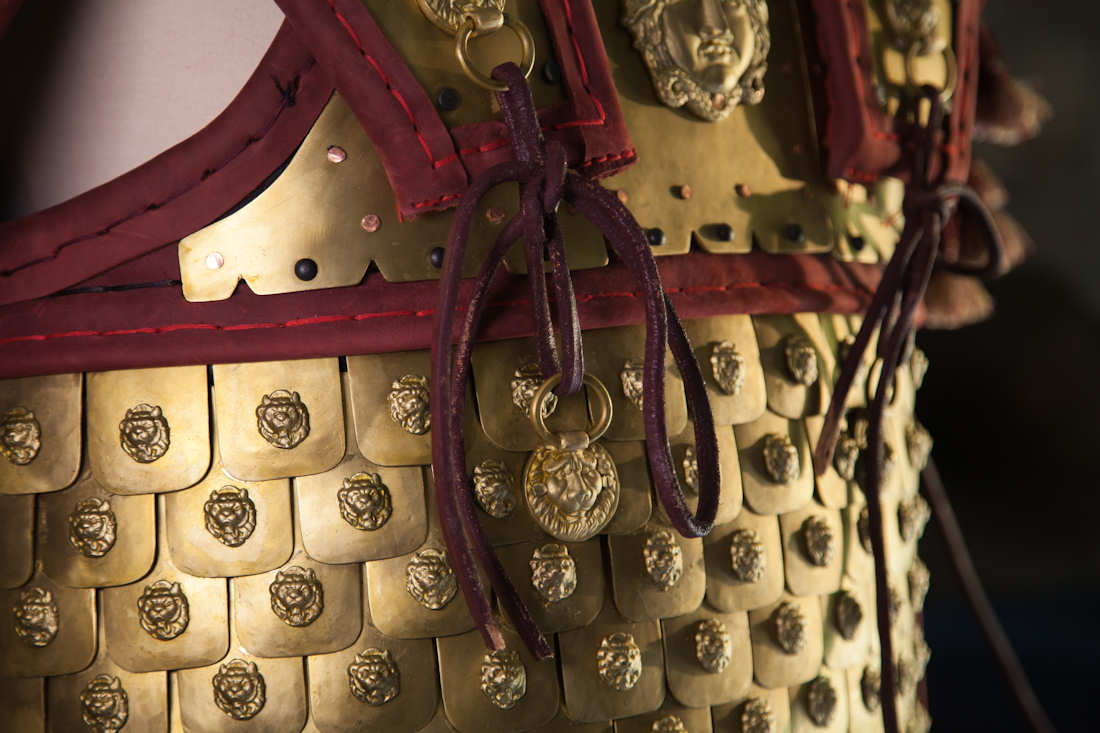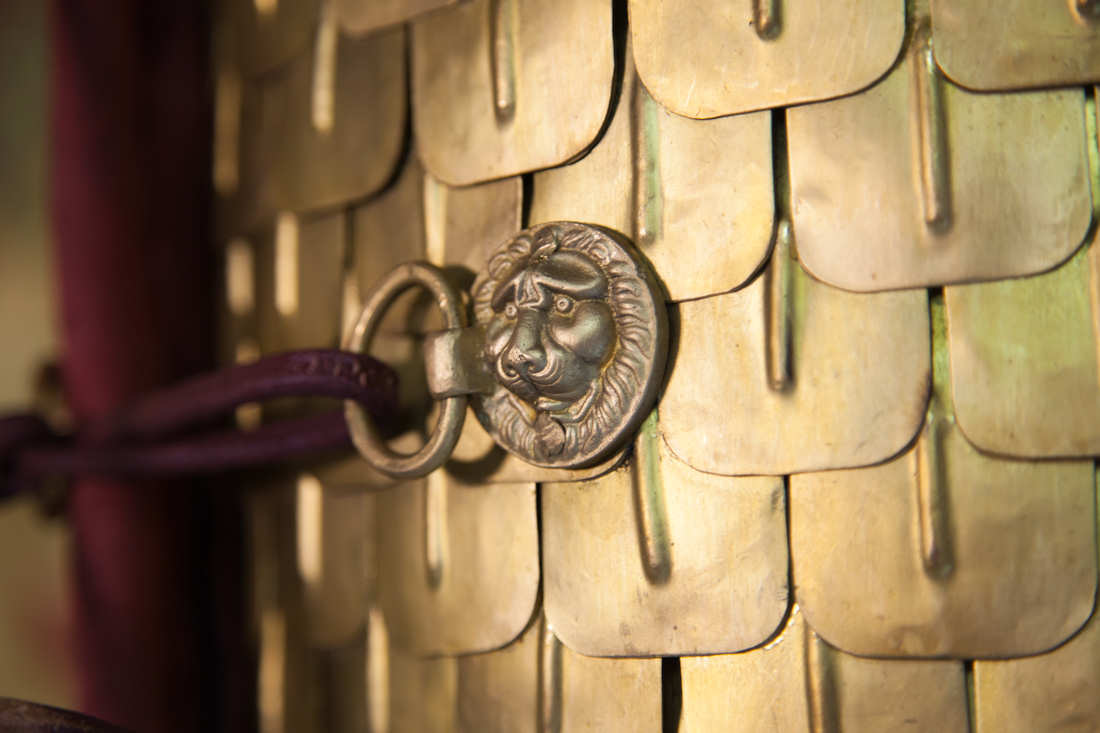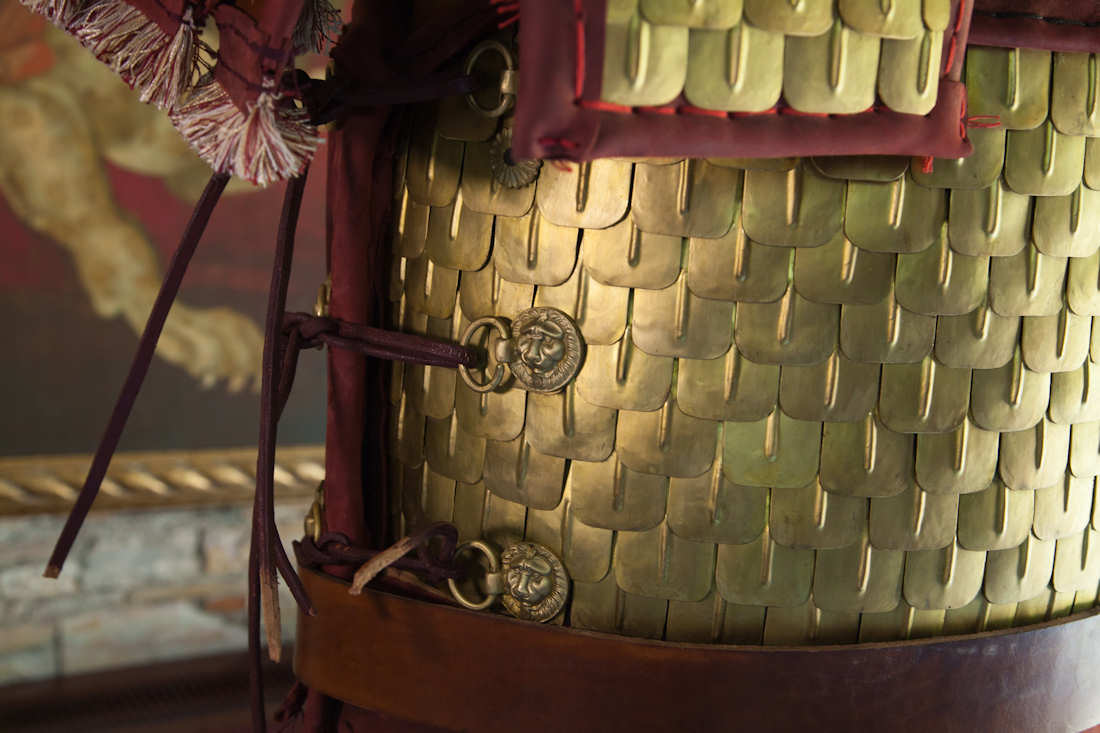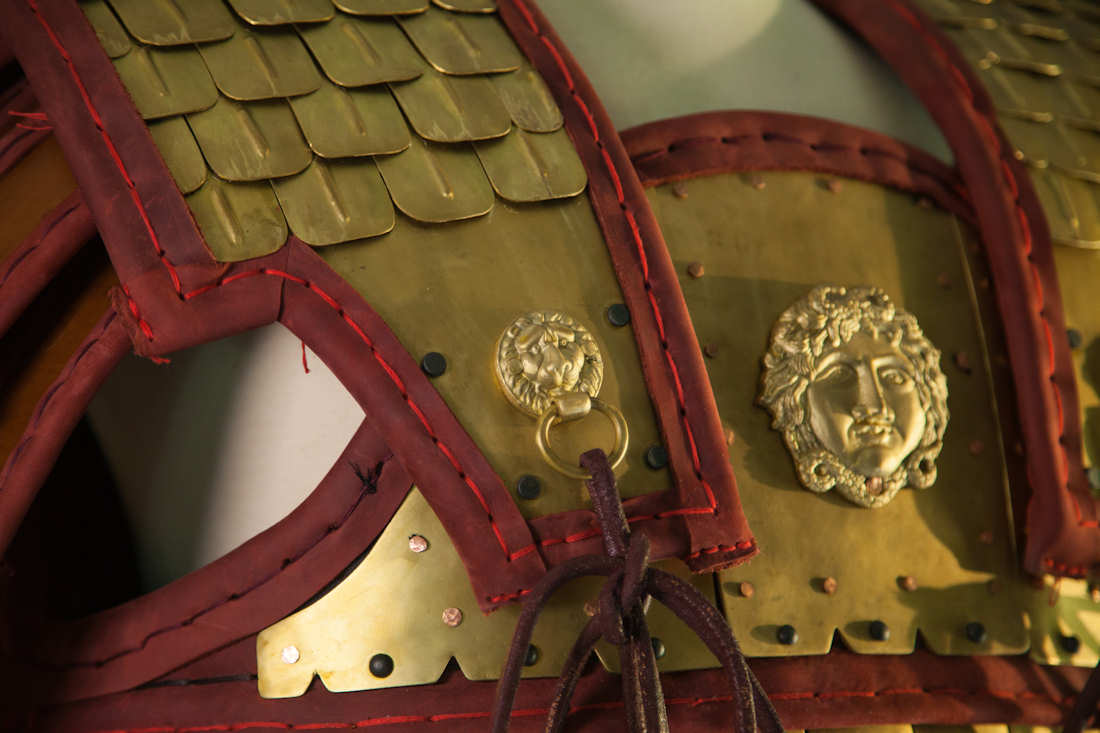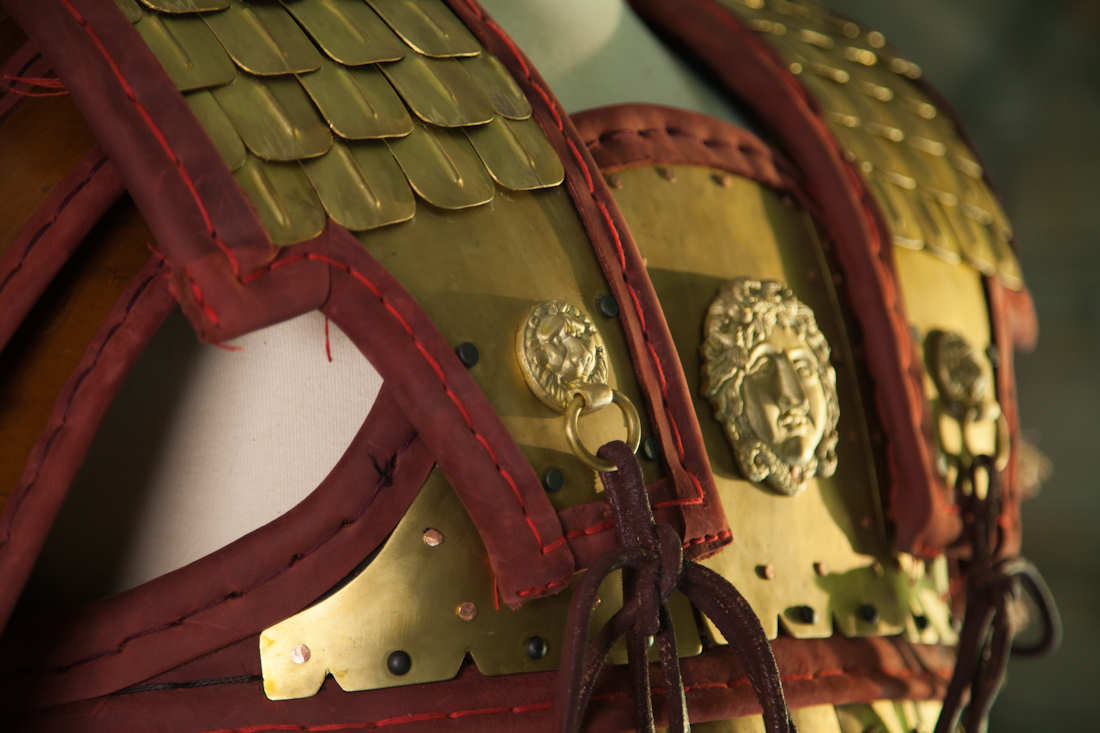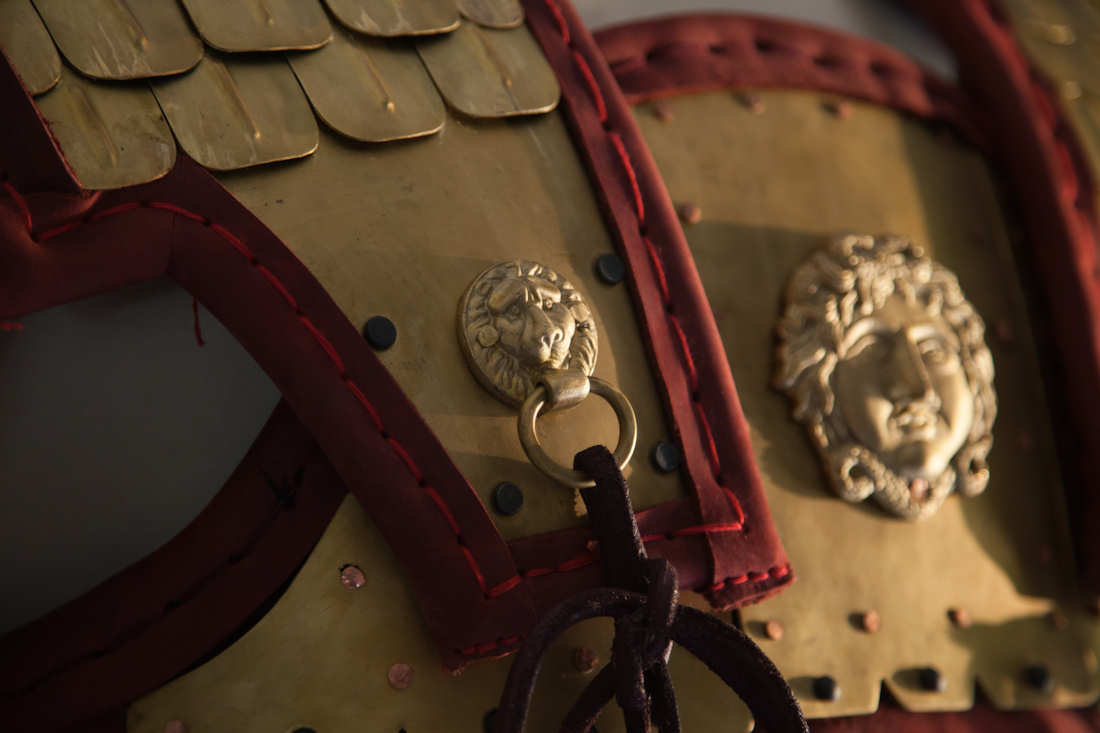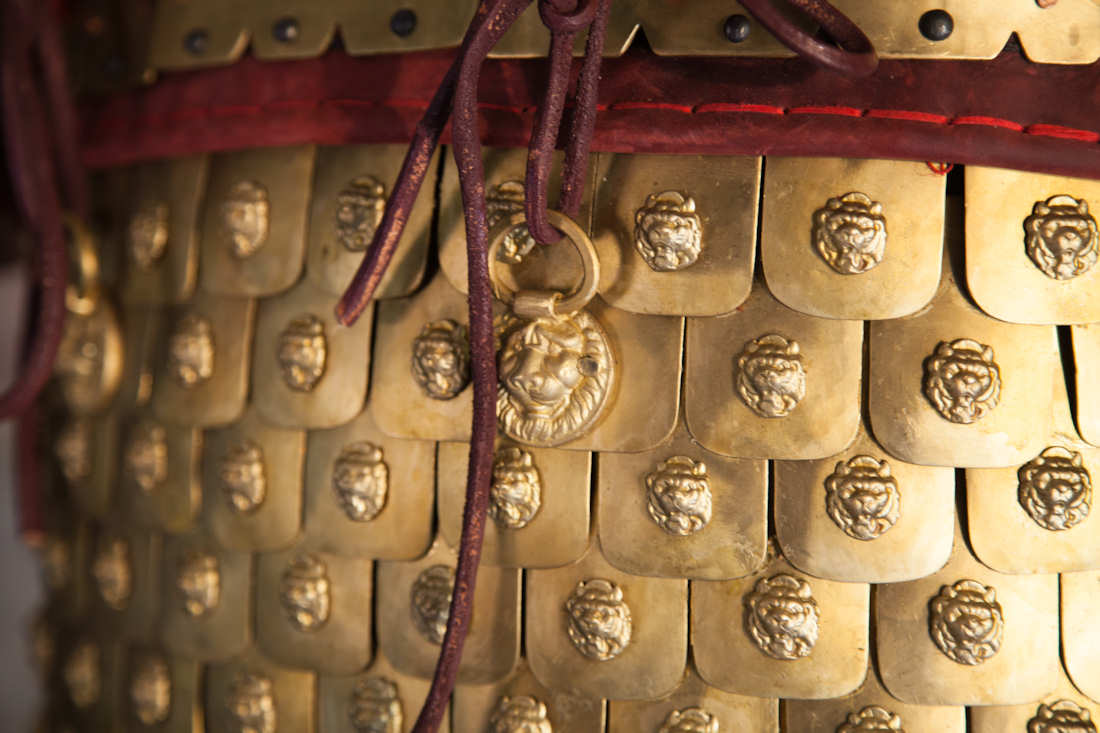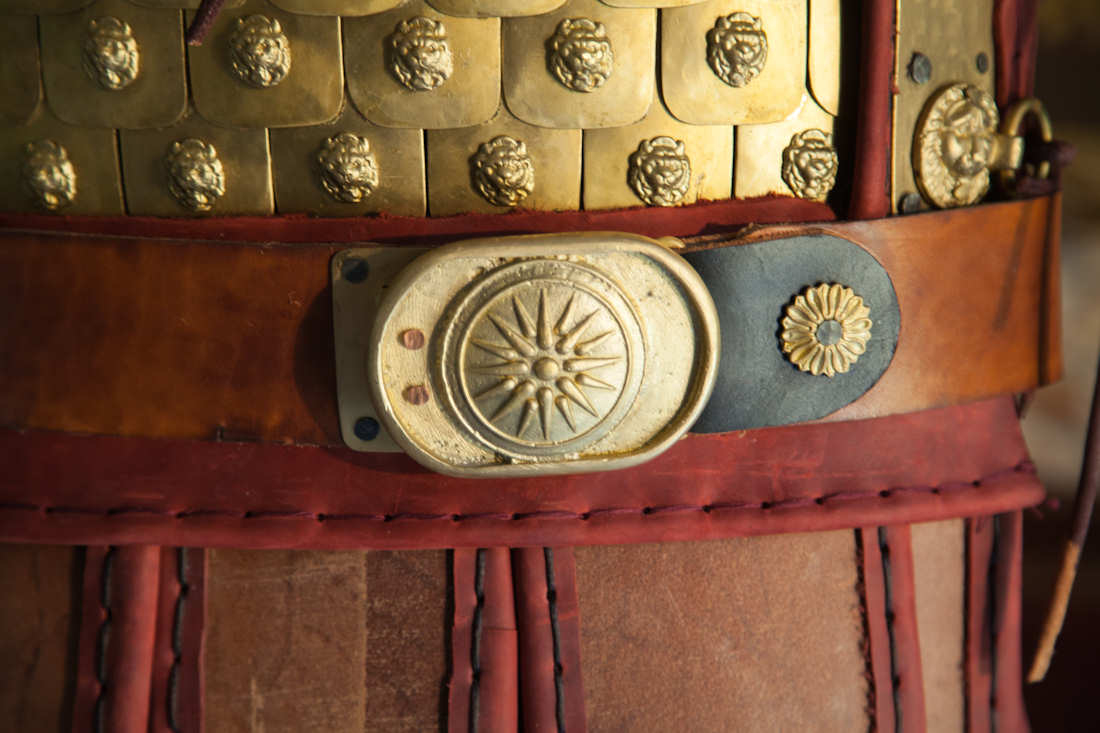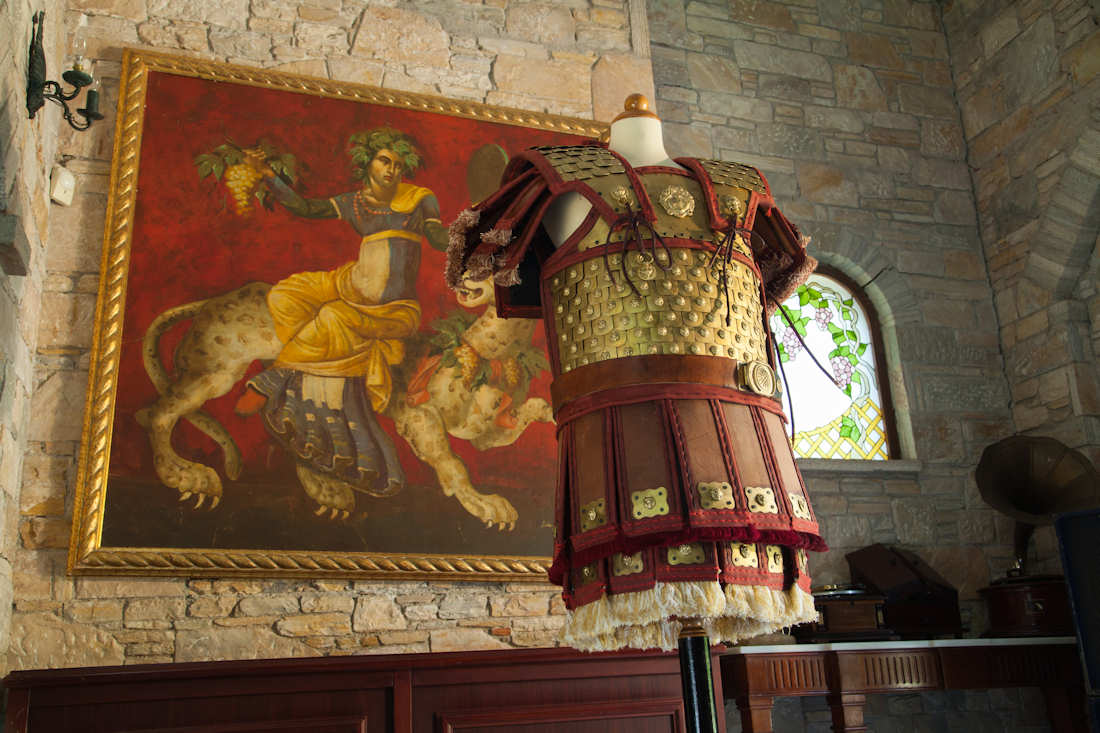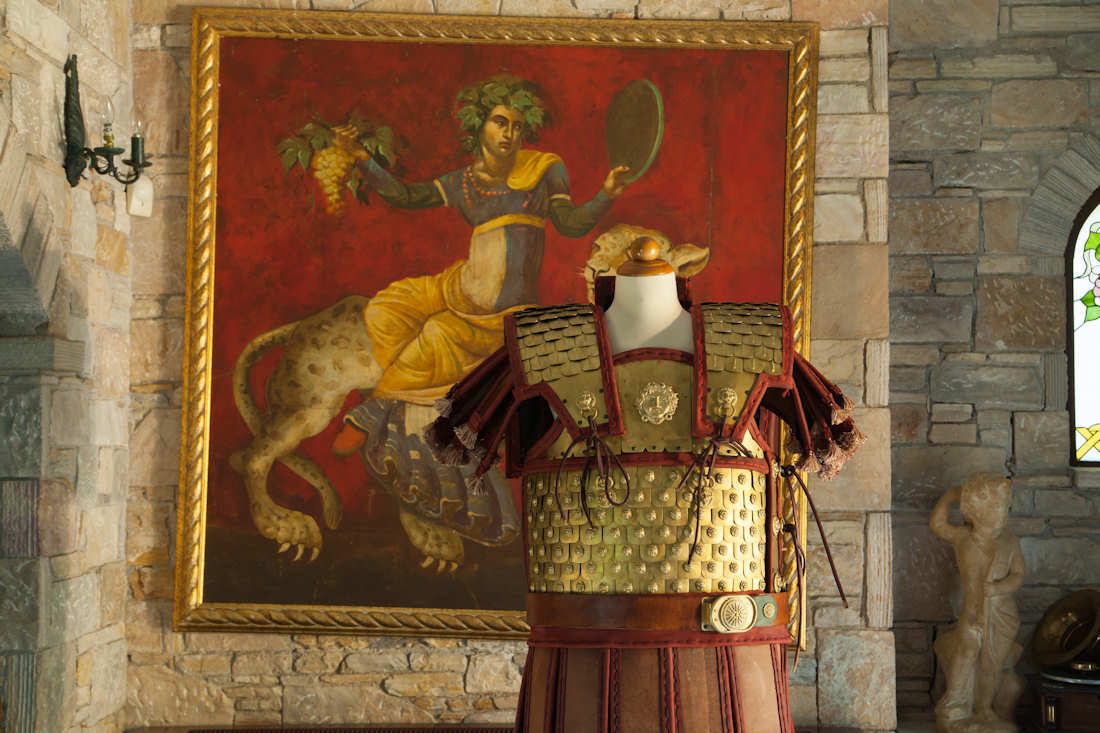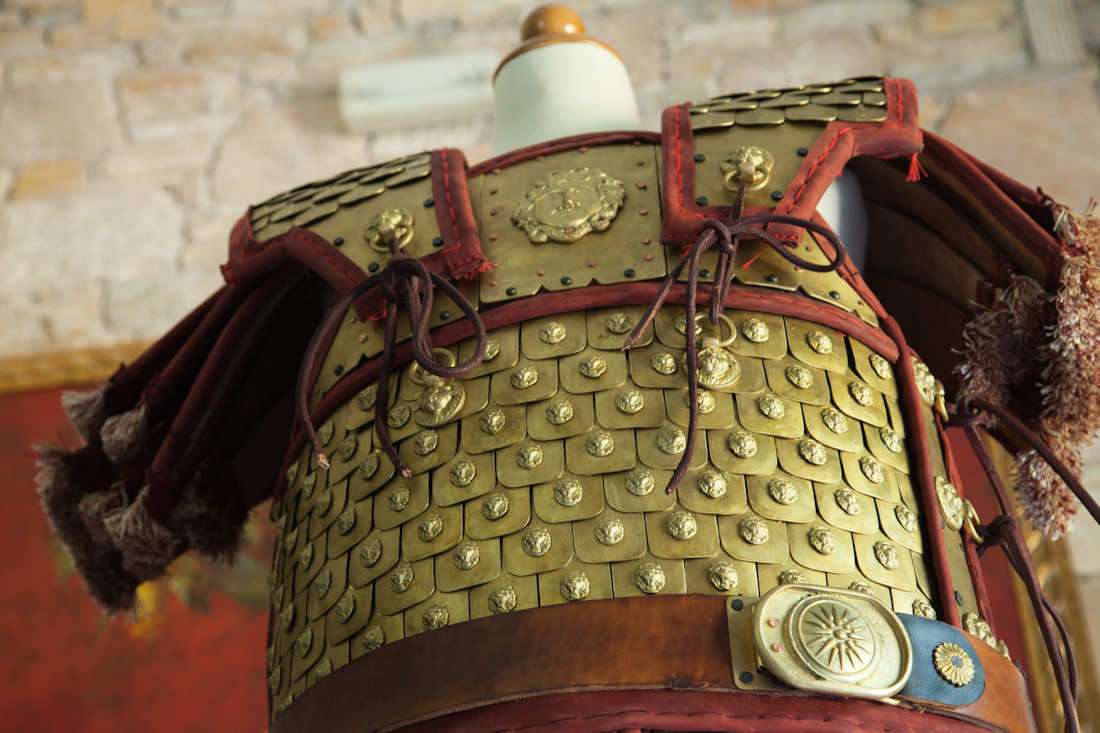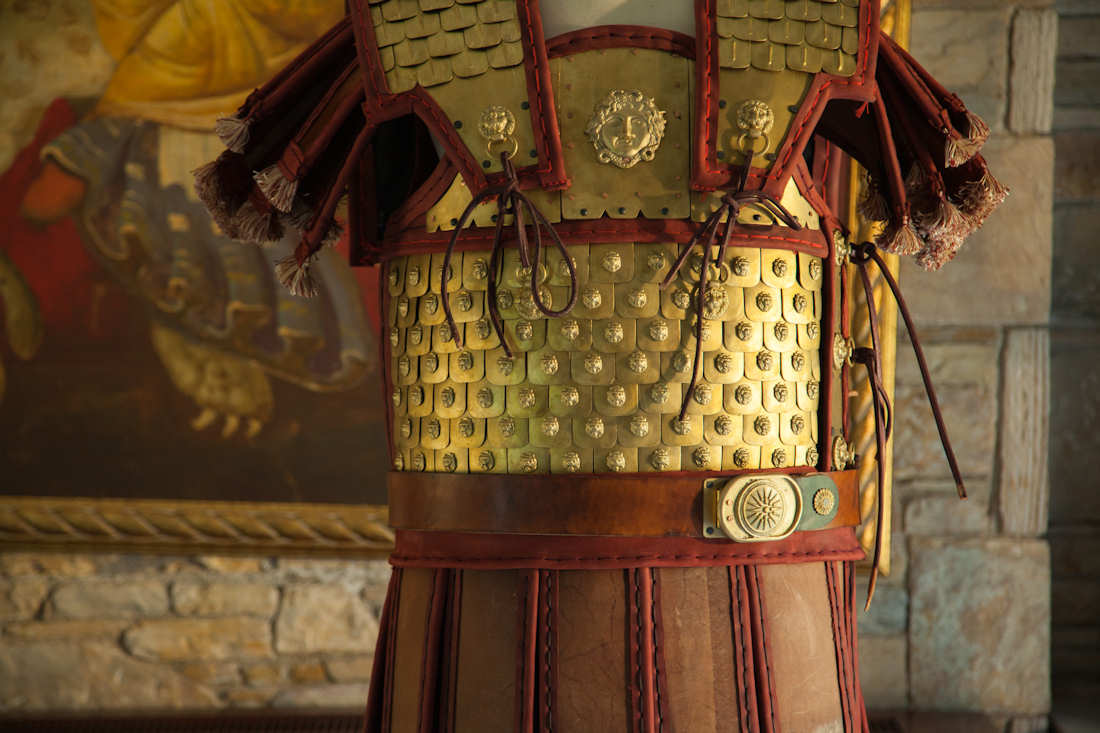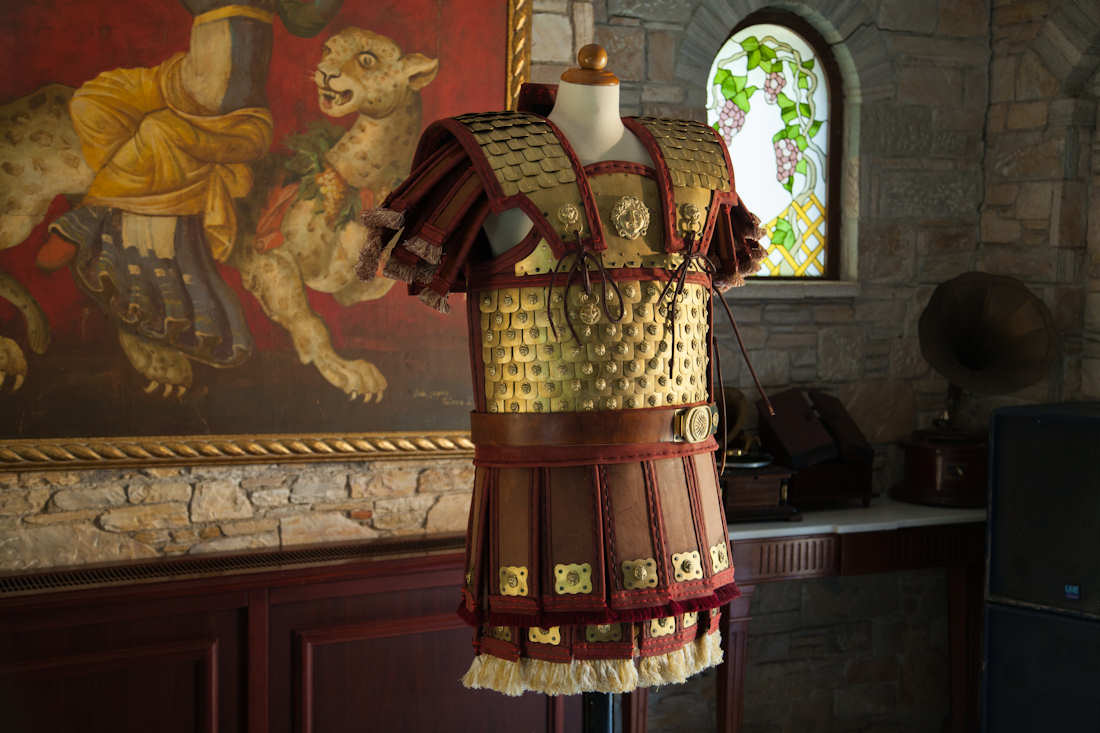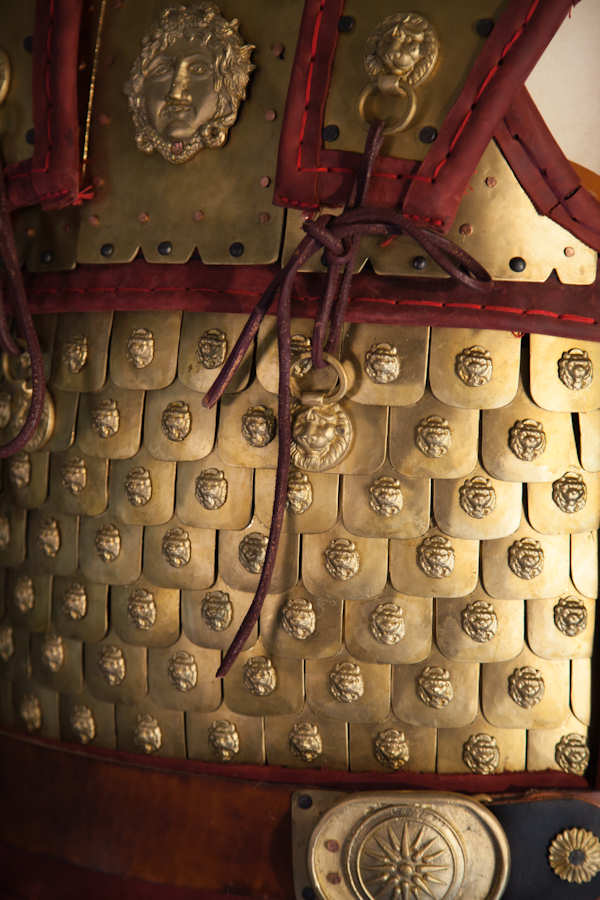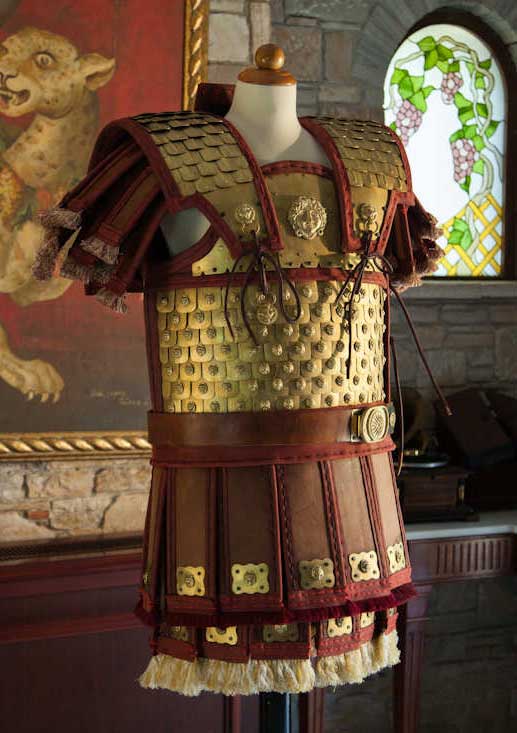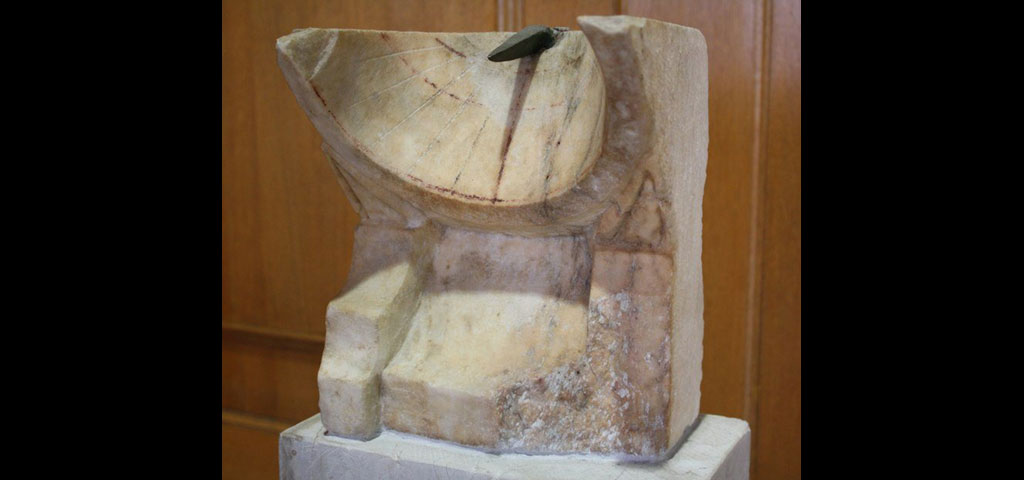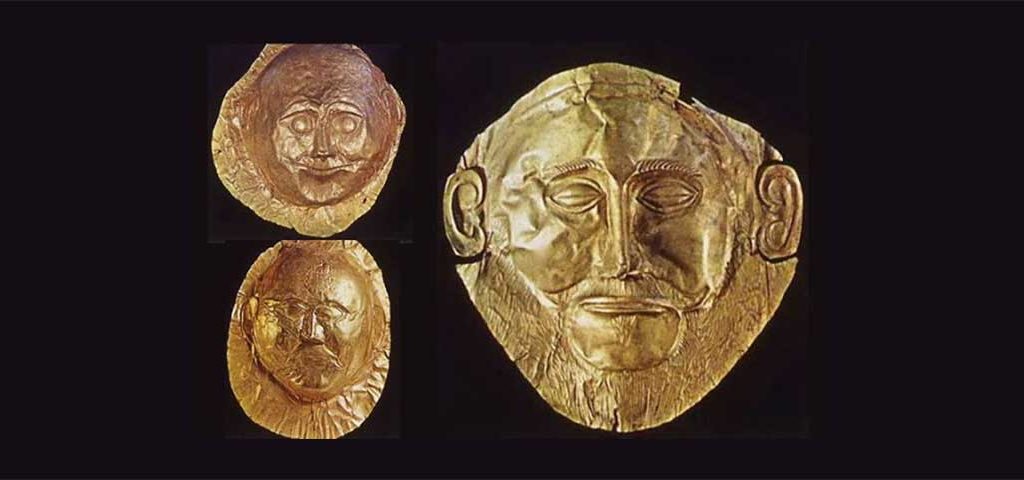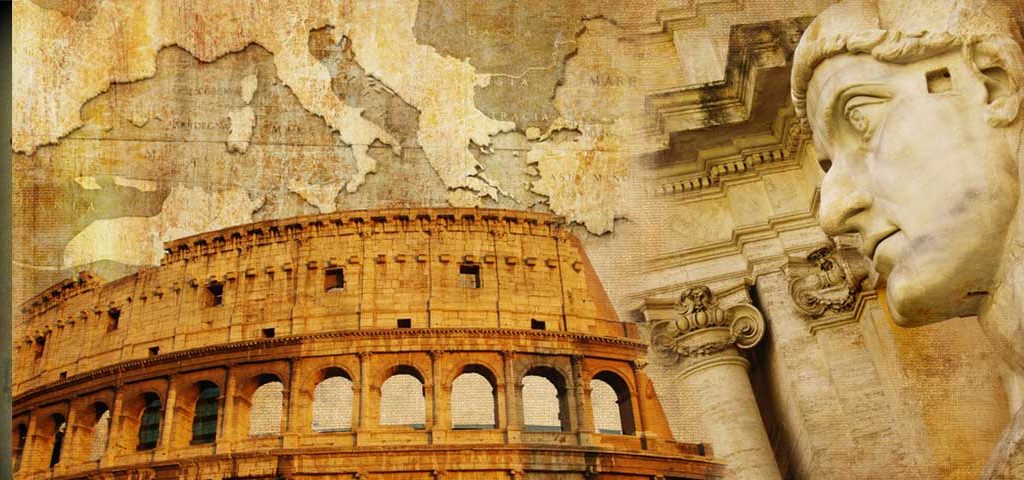Ancient Greek Armors
Alexander the Great Linothorax
Essos 333 B.C.
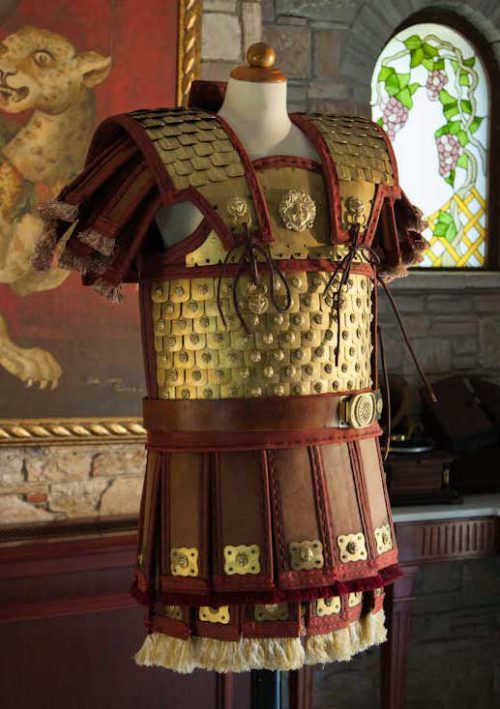
Alexander the Great is probably the most known persona of Greek history. His small innovative army and the tactics that invented and applied in the military fields made possible the unachievable, the complete conquest of the till then known world ( From the Greek mainland to Western India, creating the unified Hellenistic Oikoumeni). One of the most well known depiction of Alexander is coming from the so called Pompeii Mosaic (1st century AD). The mosaic most probably is a copy of an earlier work of the Hellenistic period dated back to the 3rd century BC.
From stylistic point of view, the reconstruction was based to this very mosaic representing the Macedonian commander defeating Darius the Battle of Issus in 333 BC. Apparently, the composite organic armor that depicted to this very mosaic is a Linothorax type of military defensive gear, a wide spread typical Greek body armor worn by Greeks at least from the middle of the 6th century BC.
Description of the torso armor.
Over 30 m2 of linen fabric were used to form the inner layer (torso area and epomides/shoulder guards ) upon which there have been properly fixed the metallic particles ( bitten bronze scales and plaques).The low pteryges ( upper legs and groin protection) have been made by thick leather.
The torso area is covered by two types of rectangular overlapping bronze scales. To the middle of the front scales, small decorative bronze lion heads have been securely attached. The back scales bearing a ridge in the middle instead. It should be mentioned that the artistic resemblance of Alexander with a lion appearance was established from the early years of his military career as part of the state propaganda. In the breast area three anatomical bronze plates have been fastened with rivets on the substrate linen. In the middle of the central plate of the chest has been put a bronze apotropaic Gorgoneion (Medusa) following the current artistic requirements of the 4th century BC. Also, a pair of lion-shaped fastening points are in the middle of the front side and three more similar pairs are present in the vertical trim in the region below of the left armpit ( five pairs of loops).
The upper part of the armor which protects the upper back and the shoulders area has been covered approximately with 400 bronze ridged scales fastened with rivets on the fabric substratum. For aesthetic and practical reasons the width of the flakes of the front shoulder pads are smaller than those of the back. Respectively, at the ends of the two front shoulder protections we meet a pair of bronze lion head loops which with the help of leather thongs connect the upper part of the armor with the torso (two pairs of fastening mechanism). Two characteristic bronze embossed “Macedonian suns” function as keystone for securing the shoulder defences to the main body in the rear upper region.
The leather wings protruding from the two shoulders openings are not attached directly to the shoulder bridges but they consist a separate defensive addition which is fastened independently to the torso of the warrior. At their edges bear leather folded fringes as extra decoration.
The wings (pteryges) of the lower limbs have been settled in a double row and have been made of thick leather. In addition, the leather straps of the lower wings have been treated individually with natural wax for long lasting protection from moisture and disintegrating effects of the sun. Each strip carries leather side trim in all sides as an extra decorative element. Metal decorative bronze pads lion heads are positioned with rivets to the underside of the wings offering stability and a rich decoration. Around the torso a leather war belt with the characteristic bronze Macedonian Dynasty emblem completing the set.
It should be mentioned that there are more than one possible reconstruction of Alexander torso. Here a first professional attempt was tried by the creator Dimitrios Katsikis.
